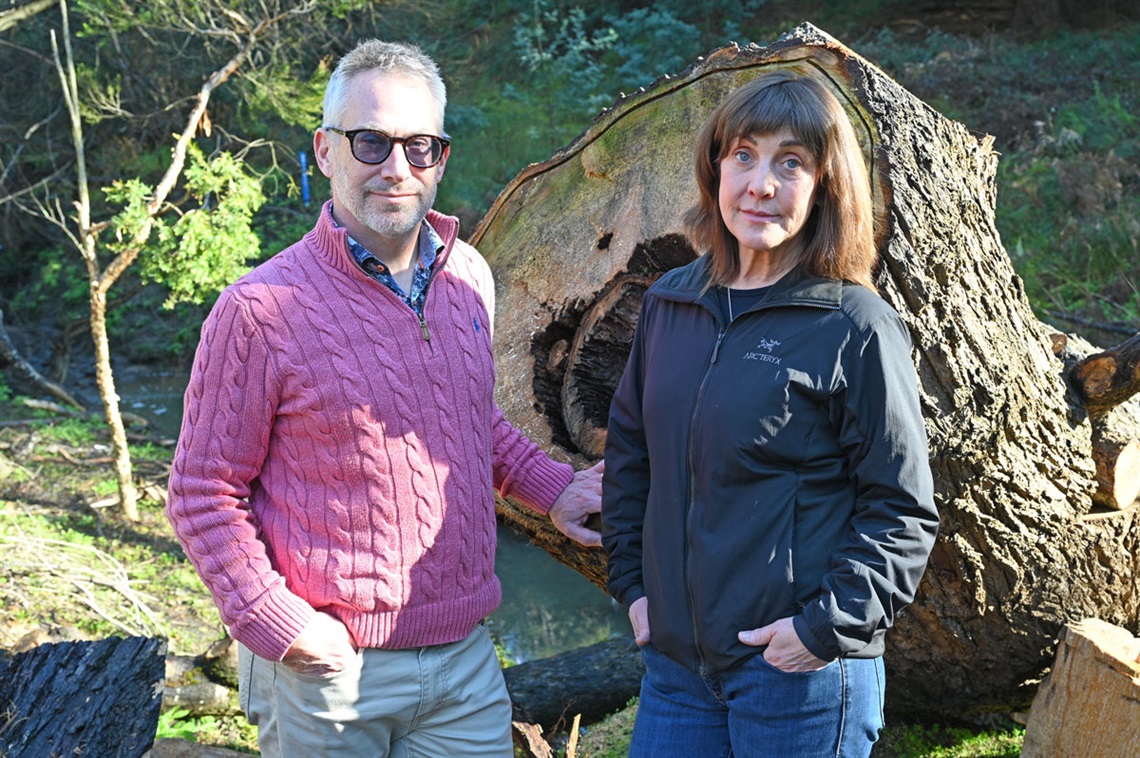
Work has started on a huge environmental restoration project to target and remove 300 environmentally damaging crack willows from the Sandy Bay Rivulet.
Contactors carried out a 'drill and fill' operation, a method that will kill the trees, allowing arborists to return in September or October, which is when the heavy lifting starts, cutting down and removing the weedy willows.
Julia and Mike, pictured above, live on a beautiful property backing on to the rivulet and they can't wait to see the results of the project.
They have lived along the rivulet for 18 years and seen how willows have slowed the flow.
Julia says the rivulet is now often still or stagnant due to the dense root mats of the crack willows and the leaf litter in autumn.
“I’m really supportive of this project and looking forward to hearing the rivulet flow freely again and seeing native wildlife like eels, fish, and hopefully the platypus return," she says.
“It’s encouraging to see real action being taken to restore the rivulet’s health and give native species – including the platypus – a chance to return."
The removal of willows from Sandy Bay Rivulet is the next stage of the $1.1 million three-year project, which is equally funded by the City of Hobart and the Australian Government through the Disaster Ready Fund.
We have made great strides in reducing the number of crack willows on the Hobart Rivulet and improving the health of this much-loved waterway for platypus and other aquatic animals.
The Sandy Bay Rivulet offers much more challenging conditions, with steep riverbank access and the need to remove several trees from private land.
We are working closely with all residents affected by this project, and offering to plant back two new trees for every willow tree we remove from their property.
Learn more

Giant crack willows choking the Sandy Bay Rivulet now earmarked for removal.